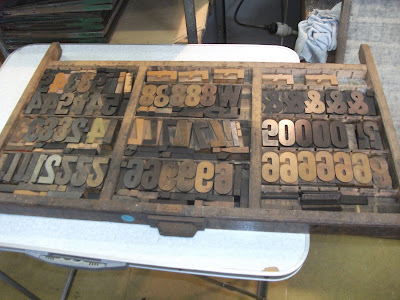




Took a visit out to silverstream type museum. Didnt even know it existed until I started on this project. A print/type archive.
I repeat this post from January 2009. It is a good list to keep in mind. What Sustainable Packaging Design is according to SPC – Concluded in 8 points;







In the 1980s and 1990s profit and ethical issues were no longer considered mutually exclusive and more market-oriented concepts emerged, such as the 'green consumer' and ethical investment. The purchase of socially responsible, 'ethical' products and services has been stimulated by the dissemination of research into sustainability issues in consumer publications. Accessibility and inclusivity have also attracted a great deal of design interest and recently designers have turned to solving social and crime-related problems.Social responsibility, in various disguises, has been a recurring theme in design for many years. Since the 1960s several more or less commercial approaches have evolved. In the 1970s designers were encouraged to abandon 'design for profit' in favour of a more compassionate approach inspired by Papanek.
Organisations supporting and funding such projects have recently included the NHS (research into design for patient safety); the Home Office has (design against crime); Engineering and Physical Sciences Research Council (design decision-making for urban sustainability). Businesses are encouraged (and increasingly forced by legislation) to set their own socially responsible agendas that depend on design to be realised.
Design decisions all have environmental, social and ethical impacts, so there is a pressing need to provide guidelines for designers and design students within an overarching framework that takes a holistic approach to socially responsible design.





60Bag – Biodegrades in 60 days. The bag is made of flax-viscose non-woven fabric and was developed and manufactured in Poland. The flax-Viscose fabric is produced with flax fiber industrial waste, which means it doesn’t exploit any natural resources and requires minimal energy during its production. In January this year 60Bag was honoured with the Green Dot Award.

What (are you collecting): I collect women's passports from the 1950s and earlier.
When (did you start): 2004.
How (many do you have?): Seven.
Where (do you find them): Ebay, mostly. And friends buy them for me.
Where (do you keep them): On the plate rail of what would be the dining room in a more civilized house, but in our house is the playroom.
What (‘s a crazy/interesting story behind one): One of the first things you notice in these passports is how they were often created to be issued to a traveler and "wife" — husband and wife could travel on one passport, and the assumption was that a traveler would be male, with perhaps a wife coming along. Women traveling solo screwed up the system — the issuer would have to go through crossing out all the blanks for "wife." Children, too, could travel on a passport with their parent.
Transform Shipping Flats into Weekend Furniture. Readymade an online magazine that is embracing the system of upcycling. they take old materials and transform them into something new and useful. It's about ingenuity and social responsibility that is making this approach a huge hit. The self gratification that comes with making something yourself, at low cost is worth the time and effort. This chair below cost no more than $10. The website provides a list of ingredients, tools and instructions on how to make these products. By adding in your own personal style such as colour, you can make these a unique and one off item. Something to value a lot longer than a plastic, mass manufactured outdoor chair!!


http://www.readymade.com/projects/article/lumber_lounge



“It is very difficult for a consumer who wants to do the right thing by the planet but part of the trouble is labeling and for the consumer being certain they are buying an eco friendly product would be helpful. There should be a global certificate for genuinely eco-friendly products.”
- a quote I found on a sustainable fashion website that raises a really valid point about sustainable awareness. We should be informing consumers about what they are buying. Where has this product come from and where was it made. If it is made from 100% materials or locally produced then this should be something that is celebrated on the garment or product. The consumer is then rewarded in an emotional sense for buying a product that is less impacting on the environment.





"World Sweet World Magazine gave you a creative hit every few months to inspire you to get making. It consisted of beautifully illustrated, step-by-step instructions for making cool stuff, followed by feature articles about people, places, and sustainable living."
-World Sweet World magazine dedicated to craft and sustainable pracitces.
